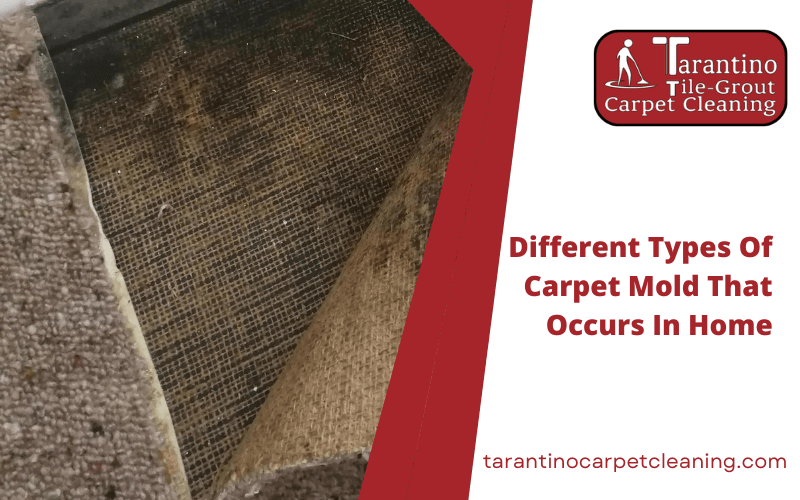Molds create irritants, mycotoxins, which are potentially dangerous compounds, as well as allergens, which are substances that can trigger allergic reactions. Sensitive people may experience allergic reactions after touching, breathing, or contacting mold or mold spores.
People with asthma who are allergic to mold can also experience asthma episodes due to mold. Mold exposure can also irritate a person’s eyes, skin, nose, throat, and lungs, whether or not they are allergic to mold. Professionals can help to remove these molds. Here are some types of molds that you can normally find in your home.
Types Of Carpet Molds In The Carpet
↣ Aspergillus
Diseases associated with this type of mold are referred to as aspergillosis. Depending on the species, Aspergillus can have different appearances. Aspergillus fumigatus, often discovered in kitchens and bathrooms, typically has a powdery appearance and is blue-green or grey.
Initially white, Aspergillus Versicolor eventually turns yellow, orange, or green, depending on the growth surface and environmental factors. It frequently appears on the wallboard, in bedding, and basements. A key ingredient in mildew, Aspergillus niger frequently grows on wet walls.
↣ Cladosporium
Within this genus, there are more than 700 species of mold. Colonies range in color from olive to brown to black. These mold genus’ species flourish in damp environments like other molds.
It frequently appears on painted surfaces or the backs of toilets. People with asthma or other respiratory conditions can be badly harmed by high levels of airborne organisms.
↣ Penicillium
Penicillium species, which are typically green in color but can occasionally appear blueish, can grow indoors even in conditions of low relative humidity as long as the surface they are growing on is moist.
It has also been discovered on mattresses, wallpaper, insulation, and ceiling tiles. It typically favors materials that have water damage.
↣ Alternaria
There are 299 species of mold in this genus. They grow into dense, green, black, or grey colonies. Alternaria molds can aggravate asthma symptoms or cause allergic reactions like hay fever.
Serious infections are uncommon, except for those with weakened immune systems.
↣ Stachybotrys Chartarum
This slimy, greenish-black mold generally develops on products like wallboard and insulation that have high cellulose and low nitrogen content. Materials that are moist or have water damage are particularly appealing to them. For it to grow, a lot of moisture is needed.
Eye, nose, and throat irritation have all been linked to black mold. It has also been linked to other, more severe symptoms like chronic fatigue and headaches.
↣ Chaetomium
They are defined by a musty smell. Mold spores start out being white and cotton-like before becoming grey, brown, or even black.
It normally thrives usually moist carpets, wood surfaces, wallpaper, and drywall that has been harmed by water. Removal is best left to experts because it is frequently mistaken for black mold.
How To Prevent Mold Growth in Your Carpet?
The easiest way to deal with mold is to prevent its growth in the first place. The best approach to do this is to make sure that there are no circumstances that encourage development. There can be several signs of mold on your carpet, which you need to figure out by analyzing your carpet. Here are a few strategies for preventing carpet mold growth.
- Decrease The Indoor Humidity
- Install Carefully
- Select Premium Carpet Padding
- Never Let Water Stand Still
- Tidy Smart
These practices can help you to extend the lifespan of your carpet. If you have no idea how to maintain your carpet, you can hire professionals. They are well trained and aim to provide the best services around the area. Call them anytime if you need some assistance.

